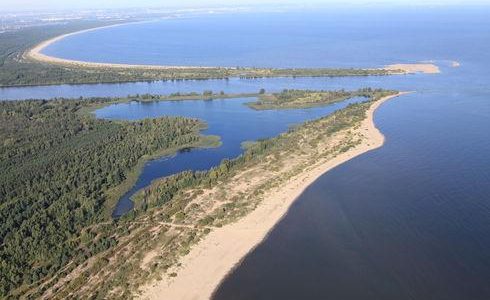It is unknown what the park looked like before the 18th century but when the Abbot’s Palace was rebuilt in the middle of the century gaining baroque forms, Jacek Rybiński, the then abbot, decided to “adjust” the surrounding part of the garden to his new seat. This led to his creating the baroque part of the park, referred to as French sector, as the planning and design of particular parts was based on styles popular in France at that time. In this part of the park, geometry and order can be noticed. Between the palace and the southern border a set of flowerbeds was laid, surrounded by low, regularly-shaped hedgerows, in general this recalls a flower carpet. According to the French rules there should be a great long view onto the park from the palace windows, but the land in Oliwa was limited in its size from the south side. The problem was solved by creating a landscape axis perpendicular to the short perspective directly in front of the palace. Deviation from the baroque rules was compensated by the limitless view achieved through the pond at the end and the sea in the background. It was quite understandable that this style, which used to be called “the prince’s view”, the Polish name “the road to eternity” was invented. The slightly isolated part of the park lying in the artificial valley full of colourful flowers was referred to as “paradise”.
Karl Hohenzollern-Hechingen, the second last Oliwa abbot, developed the northern part of the park, this time in accordance with the English style, reflecting the then popular English image of Chinese gardens. Hence a quite different part of the garden was created with a more romantic style, imitating nature, and elements typical for parks such as gazebos, bridges and water cascades created from the waters of the local stream. The abbot’s idea was to include the hills located west from Oliwa into the park, which were partly re-laid out, without establishing limits between the park and the natural forest. On the highest hill, today named ‘Pachołek’, a scenic pavilion was constructed, later to be replaced by towers offering views of the green surroundings and Gdańsk Bay.
Under the supervision of the last abbot, Joseph Hohenzollern-Hechingen, a range of exotic plants was imported to the park and the most neglected parts of the landscape were redecorated and rearranged. Since the beginning of the 20th century, especially during the inter-war period, additional elements have been added to the park complex, including a greenhouse and a botanic garden.
Today’s park, belonging to the City, has maintained the major elements of the style and equipment created over the last 250 years and is an attraction for the residents of Gdańsk and for tourists. A walk in the Oliwa park is recommended as a nice supplement to visiting the cathedral complex, and to relax with nature after seeing pieces of art and the historical beauty located in the church and the monastery.



















